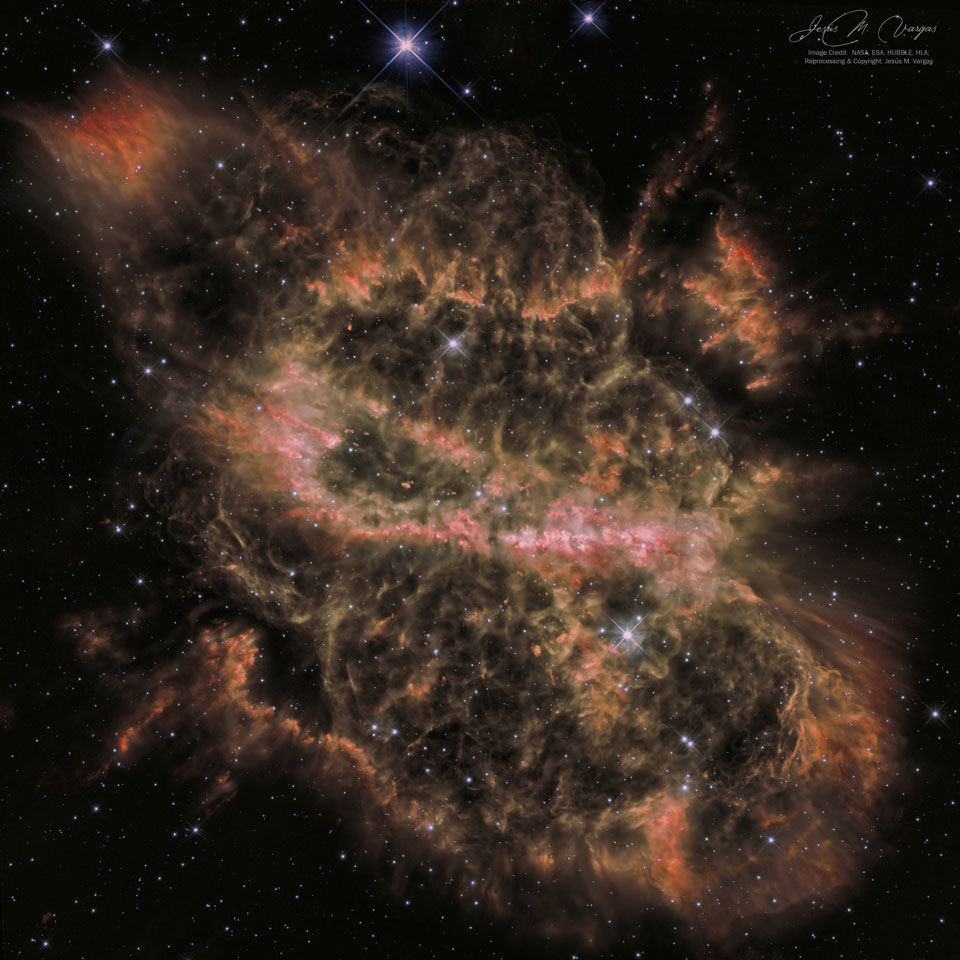2020年8月14日
NGC 5189: An Unusually Complex Planetary Nebula
Image Credit: NASA, ESA, Hubble, HLA; Reprocessing & Copyright: Jesús M. Vargas
Explanation: Why is this nebula so complex? When a star like our Sun is dying, it will cast off its outer layers, usually into a simple overall shape. Sometimes this shape is a sphere, sometimes a double lobe, and sometimes a ring or a helix. In the case of planetary nebula NGC 5189, however, besides an overall “Z” shape (the featured image is flipped horizontally and so appears as an “S”), no such simple structure has emerged. To help find out why, the Earth-orbiting Hubble Space Telescope has observed NGC 5189 in great detail. Previous findings indicated the existence of multiple epochs of material outflow, including a recent one that created a bright but distorted torus running horizontally across image center. Hubble results appear consistent with a hypothesis that the dying star is part of a binary star system with a precessing symmetry axis. NGC 5189 spans about three light years and lies about 3,000 light years away toward the southern constellation of the Fly (Musca).
Tomorrow’s picture: Moon meets Mars
NGC 5189:极为复杂的行星状星云
影像提供: NASA, ESA, Hubble, HLA; 影像再处理与版权: Jesús M. Vargas
说明: 这个星云为何如此复杂呢?像太阳这类的恒星面临死亡时,会抛出外层的气壳,然后通常会形成形状简单星云。诸如球形、双瓣状,或偶而的环状或螺旋状。然而,行星状星云NGC 5189除了大致的Z型(本图经过水平旋转,故形似英文字母S)轮廓之外,其他内部的结构颇为复杂。为了了解其成因,地球轨道上的哈伯太空望远镜对NGC 5189进行详细的观测。先前的研究指出,这个行星状星云经历多个物质外泛时期,最近的一次产生了水平贯过影像中心的明亮扭曲环体结构。哈伯望远镜的观测结果,和垂死恒星为具有进动对称轴的双星系统成员之假说吻合。位在南天苍蝇座方向的NGC 5189,距我们约3,000光年远,跨幅则约有3光年。
明日的图片: Moon meets Mars







